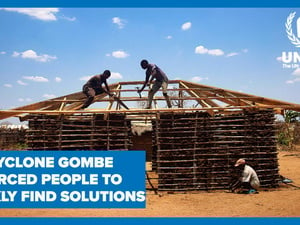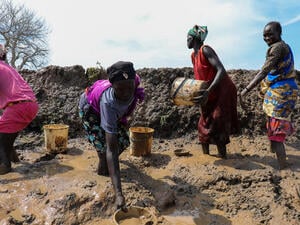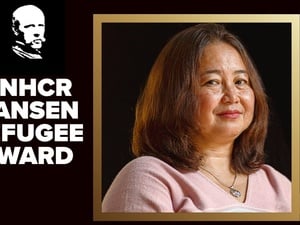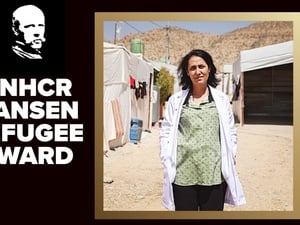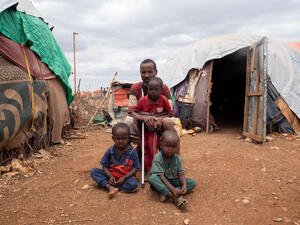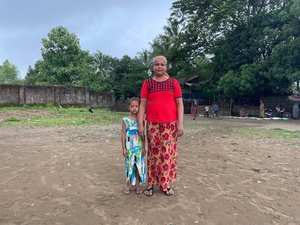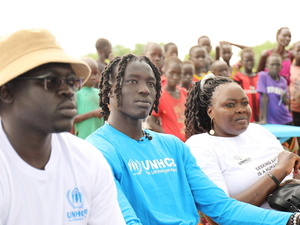Displaced Kosovars return home on go-and-see visit
Displaced Kosovars return home on go-and-see visit
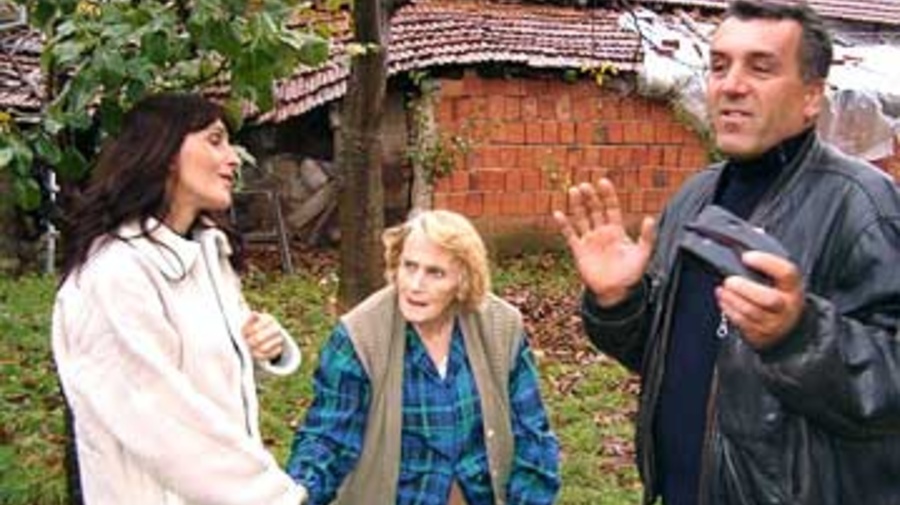
Vesna and Vesko Resetar greeting an old neighbour in Kosovo's Fushë Kosovë/Kosovo Polje municipality.
KOSOVO (UNHCR) - It doesn't take much to destroy a house, but it takes a lot more to break the foundations of a community, as a group of internally displaced persons (IDPs) discovered when they returned to Kosovo on a go-and-see visit recently.
After five years of exile in Serbia and Montenegro, eight IDPs went back to visit their homes in Fushë Kosovë/Kosovo Polje (FKP), 8 km south-west of Prishtinë/Pristina, on a trip organised by the UN refugee agency and the Danish Refugee Council last month. They were escorted by the Kosovo Police Service (KPS) and three NATO Kosovo Force (KFOR) soldiers.
Djordje Stankovic, 78, was the oldest member of the group. Since fleeing their hometown in 1999, he and his family have been displaced in the Serbian town of Jagodina, where they live in a house provided by his cousin. Work is hard to find for IDPs in Serbia. Thankfully, the Stankovics do not have to pay rent and are able to survive, barely, on Djordje's pension from his days as a railway worker in Kosovo.
The go-and-see visit took Stankovic to his old house. It was extremely difficult for him to hide his disappointment as he stared at the ruins. Speaking in Serbian, he was very distressed as he tried to reconstruct a mental picture of his home, complete with fruit trees in the backyard and a well. Unfortunately, the only thing still standing was the ruined shell of his former house.
Still, this has not stopped the old man from yearning to return. "I will never learn to live in Serbia. I miss my home too much! Life there is extremely difficult because there are no jobs, no proper housing, and I miss my relationships with friends. I am old. My son may also return if he manages to find a job here," he said.
In 1990, ethnic Serbs constituted almost 25 percent of FKP municipality's population. The figure dropped rapidly after June 1999, when an estimated 230,000 people fled Kosovo after the NATO bombing and the withdrawal of Serb forces from Kosovo. Most of them were ethnic Serbs, followed by Roma, Ashkaelia, Bosniaks and other minorities who feared reprisals from the majority ethnic Albanians. Today, Serbs represent less than 8 percent of FKP's inhabitants.
However, ethnic differences did not seem to be an issue for Vesna and Vesko Resetar, who were also on the recent go-and-see visit to FKP. The couple met their former neighbours, an Albanian family they had protected from possible persecution during the conflict. Reunited, they had coffee as more Albanian neighbours trickled in to meet the Resetars and ask about old acquaintances now displaced in Serbia. The room was soon completely filled with people, catching up and laughing over memories of days gone by.
Asked about their plans, Vesko replied, "We intend to return. Let's see, as it's not an easy thing. But at least we are thinking about returning, whereas some years ago we could only have imagined this visit. We hope that the situation will improve."
In addition to the positive community spirit, the local authorities and the Provisional Institutions of Self-Government (PISG) also need to be more involved in improving the climate for returns. Thus, it was an encouraging sign that the Municipal Assembly President of FKP, Skënder Zogaj, met with the visiting IDPs and expressed his readiness for further contacts with them.
"There is a safe environment in the municipality. There were no ethnic conflicts in the last few months," Zogaj told the IDPs. "We have seen some improvement in the engagement of the Ashkaelia minority children in the education system, while children of Serbian ethnicity receive schooling in a new school building."
He conceded that there is a lack of available jobs, but added that the municipality is trying its best. "There is a new health centre here in the town, and there are 50 new positions available for Serbian citizens. We encourage you and your youth to apply for these jobs," he said.
This was the first trip back to Kosovo since 1999 for most of the visiting IDPs. It was a difficult and emotional trip for all. Some of them wept occasionally while others kept taking pictures to show family members who could not come on the go-and-see visit.
They visited the graveyard where some of the tombstones had been destroyed two months ago. The Municipal Assembly President confirmed that the authorities were rebuilding the tombstones and surrounding the graveyard with a fence. The last stop on the go-and-see visit was the St. Nicolas Church in town and a meeting with the local orthodox priest.
With most of their properties destroyed, the IDPs' only remaining item of value was the documentation of their former homes. UNHCR field assistant Shkëlqim Shehu, who accompanied the group, said, "The returnees are always considered for reconstruction assistance and if a larger group wishes to return, then a project could be developed which would include a wide spectrum of assistance needed for a sustainable return."
UNHCR and Irish non-governmental organisation GOAL have been working on a "minor shelter repair" project, which helps to rehabilitate the lightly destroyed houses of returnees so that they can stay on their property while seeking further reconstruction assistance.
A representative of the NGO, European Perspective, also told the IDPs about proposed plans for reconciliation activities, housing and infrastructure reconstruction, community development and income generation.
Between 2000 and November 2004, the Prishtinë/Pristina region, which includes FKP municipality, saw the highest number of IDP returns in Kosovo. Of the 12,000 people who came back to Kosovo during this period, more than 4,500 returned to the Prishtinë/Pristina region, 1,100 of them to FKP alone.
UNHCR does not promote returns to Kosovo for members of minority groups, but has been assisting displaced people who actively want to go home, either to stay or to assess the situation.
By Shpend Halili
UNHCR Kosovo


